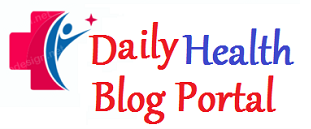Veins are microscopic, tube-like structures with thin walls that return blood to the heart. Vein disease is extremely prevalent. It arises when the veins’ malfunctioning valves permit blood to flow away from the heart in the opposite direction. Blood can thus collect in veins, resulting in disorders including blood clots, varicose, and spider veins.
Millions of people worldwide suffer from venous illness every year. It results in ailments like varicose veins, which are usually not very dangerous to one’s health. On the other hand, thrombophlebitis, or inflammation, can be far more severe and even fatal.Vein health in the elderly is usually at the most risk, but there are ways to manage and treat the symptoms.
The causes of vein diseases
Any impairment to the vein walls impairs the circulatory system. When the muscles relax, blood begins to gather and flow retrogradely—backward, away from the heart. As a result, the veins experience an abnormally high-pressure buildup that causes them to expand, twist, and stretch, slowing blood flow and perhaps forming a blood clot.
The illness may eventually result in several conditions referred to as venous disease. Vascular discomfort is a common sensation of heaviness in the affected area. It may result in tingling, weakness, or numbness in the affected area.
Common types of vein diseases
- Blood clots are a disorder that causes the blood to clot—a semisolid mass—and slows its flow.
- Deep vein thrombosis is a disorder when blood is buildup in a deep vein, commonly in the legs. In addition to causing pain and an accompanying skin rash, it may cause the affected limb to enlarge.
- Edema, or swelling: An unnatural buildup of fluid in bodily tissues.
- Varicose veins: Distorted, enlarged, and swollen veins close to the skin’s surface cause blood to stagnate or flow backward.
- Spider veins: A modest variation of varicose veins that causes a cluster of tiny blood vessels to enlarge.
- Restless Legs Syndrome (RLS): A prevalent neurological condition that results in an overwhelming impulse to move the legs.It is a curable neurological condition.
- Venous Insufficiency: A disorder where the vein walls or valves malfunction, making it challenging for blood to return to the heart.
- StasisDermatitis: Skin discoloration that appears when fluid accumulates in the legs due to inadequate blood circulation. Open sores and a change in skin tone may result from it.
- Nighttime leg cramps: A painful, uncontrollable spasm or contraction in the leg muscles, commonly called a “Charley Horse.”
- Orthopedic leg pain: Any vascular disease that results in lower limb pain.
Treatment options for vein diseases
- Medications that work to stop and remove venous clots
- Stockings or compression therapy
- Sclerotherapy injects a solution into the spider or varicose veins to cause them to collapse and finally go away.
- Stenting or angioplasty unclogs or widens veins
- Vein stripping and ligation cut off and remove diseased veins
- Vena cava filter: This procedure involves inserting a device into your vein to intercept blood clots before they reach your lungs.
- Vascular or endovascular surgery addresses more severe circumstances.
Closing words
You should contact your doctor if you have unbearable vein swelling that does not go away after a few days or abnormal swelling in your arm or leg.
